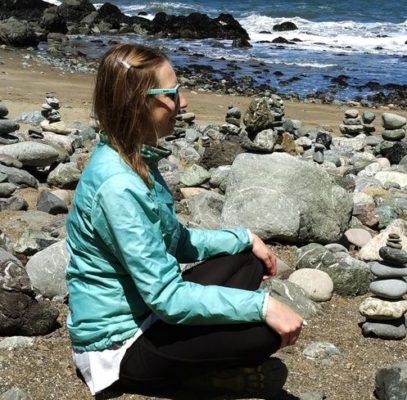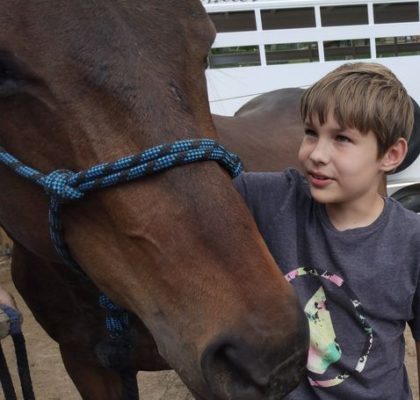Communication is an essential part of being human. We are social beings and our nervous systems are wired towards connection with those whom we feel safe and secure. To cultivate safe relationships, we need to know how to communicate our needs to others, work through conflict effectively, and let others know we care about them. We also need to know how to do these things with ourselves as well.
Traditional Yoga is a path of Self-realization that uses the external world, including relationships, to connect to True Self. Thus, Traditional Yoga texts give guidance in communicating to help move towards Self-Realization.
Recently, I was fortunate to gather with some of my family, some whom I haven’t seen in person for three years. It was a generally wonderful time and things flowed pretty smoothly. The challenge came when my father tested positive for COVID-19, followed by his wife two days later. (Both had more mild symptoms luckily). I had communicated ahead of time about how each of us would mitigate some of the risk of getting the virus. Yet, dealing with the actual situation was challenging and an opportunity for learning.

Photo from Unsplash
My study and practice of Yoga, over the past decade, helped to guide me through some of the tension and frustrations of this situation. I was able to stay ‘even keeled,’ and able to enjoy the week despite this challenge. I want to go over some of the principles and tools of Yoga that helped me around communication – with myself first and then with my family.
AHIMSA AND SATYA
First, I turn to Patanjali Yoga Sutras, specifically the ethical principles – Yamas and Niyamas. The first two Yamas, Ahimsa and Satya, are a guides in the area of communication. Ahimsa means non-violence or non-harming. The other translation I came across, I can’t remember from where, is “love in action.”
Satya means truthfulness. This can be practiced as honesty and using discernment to find what is true. In relative reality, coming back to facts and noticing what is arising in the body and the mind helps to connect to our truth. When we connect to ultimate truths (these don’t change no matter the situation), they can guide us towards our True Nature.
Ahimsa and Satya together are wonderful principles for communication. Non-harming applied in communication means that one seeks to speak with respect, kindness, and compassion. Words that may cause harm should be carefully thought about to discern if they should be spoken. There are many ways to say something and if we can, we should err on the side of ahimsa.
 Truthfulness is helped by non-harming to find ways to speak truth without it being like a sharp knife. Deborah Adele, in her book on the Yamas and Niyamas, states it beautifully:
Truthfulness is helped by non-harming to find ways to speak truth without it being like a sharp knife. Deborah Adele, in her book on the Yamas and Niyamas, states it beautifully:
“As a partner to nonviolence, truthfulness prevents nonviolence from being a wimpy cop-out and nonviolence prevents truthfulness from being a brutal weapon.”
The practices of Ahimsa and Satya are so powerful because they require us to stop and notice ourselves and our reactions. They ask us to reflect and sift through initial reactions to uncover the truth of what actually is the issue. This pause allows us to practice listening, both to ourselves and to others. It helps to give space and see the larger picture. And, possibly, connect to a more heart-centered place.
Can you imagine what the world would be like if these two principles were common practices?
KARMA YOGA
The path of Karma Yoga, Yoga of action, gives us another principle for communication that is highly empowering. Karma Yoga asks us to take responsibility for our actions and take more conscious actions that lead us towards our True Nature. The quality of our True Nature is a loving, expansive and inclusive state. If we aren’t coming from that state, we aren’t coming from our truth and responsibility.
 One common pattern when a person doesn’t take responsibility is blame. When we blame, it shows that we are struggling to connect with ourselves. Blaming is an action of shirking responsibility, which actually creates powerlessness. If we don’t take responsibility for what is ours then we can’t take action towards a solution. If you are aware that you are blaming someone else, it’s time to stop and ask what part of the issue is yours to take care of. Then, let the other person take care of their part. Taking responsibility is empowering.
One common pattern when a person doesn’t take responsibility is blame. When we blame, it shows that we are struggling to connect with ourselves. Blaming is an action of shirking responsibility, which actually creates powerlessness. If we don’t take responsibility for what is ours then we can’t take action towards a solution. If you are aware that you are blaming someone else, it’s time to stop and ask what part of the issue is yours to take care of. Then, let the other person take care of their part. Taking responsibility is empowering.
If you are over-personalizing other people’s actions, which means taking on what isn’t yours, then it’s time to, again, look at what part is yours and let go of the rest. How do you know if you are over-personalizing? You most likely are feeling obligated, guilty when you say ‘no,’ constantly compromising yourself for others, and feeling like the doormat for others. It’s when we make other people’s mistakes and issues about us.
LIVE FROM THE INSIDE OUT
One of the main aspects of any Traditional Yoga path is practices that lead you to live more from the inside out. It’s the practice of reflecting and observing yourself first when you have a reaction. It means that you go within to search for answers, rather than pointing fingers to people and situations.
Get curious about your reactions rather than being focused on others. When someone says something cruel or hurtful, instead of taking it personally, a student of Yoga would first pause and examine it. Then they would discern what is true and what is not. Finally, they would take action for what is their responsibility, letting go of the rest. I once heard Deepak Chopra state, “If we stopped taking things personally, 99% of our conflict would go away.”
HOW TO MEET DIFFERENT MIND STATES
The final point from Yoga around communication I will mention comes from Patanjali Yoga Sutra 1.33:
“By cultivating attitudes of friendliness towards the happy, compassion for the unhappy, delight in the virtuous and disregard toward the wicked, the mind-stuff retains its undisturbed calmness.” (Translation by Swami Satchidananda)
 Our mindset and attitude creates the type of communication we will have with others in their mind states. It’s easy to let other people’s mind states change our own. Pantanjali encourages us to be clear in how we will show up and communicate with others (and ourselves) depending on where they are at. Keeping these four attitudes in mind and practicing them, can keep us grounded and consciously responsive when there are challenges.
Our mindset and attitude creates the type of communication we will have with others in their mind states. It’s easy to let other people’s mind states change our own. Pantanjali encourages us to be clear in how we will show up and communicate with others (and ourselves) depending on where they are at. Keeping these four attitudes in mind and practicing them, can keep us grounded and consciously responsive when there are challenges.
3 Yoga practices for effective communication:
- Ahimsa (Non-harming) and Satya (Truthfulness)
- Take Responsibility for your reactions and get curious
- Practice attitudes of friendliness towards the happy, compassion for the unhappy, delight in the virtuous, and disregard for the wicked.
Remember that the state of our mind highly influences our ability to communicate.
During my time with my family, I used these tools. I gave myself time to reflect on my actions before speaking so I was clear on what I needed to communicate about. Taking time also allowed me not to say anything harmful. I was able to find a place of compassion and widen my view of the situation. All of these things helped me to enjoy the time with my family, instead of ruminating on one aspect of our time together, creating more tension and resentment.
Happy communicating!
Namaste.
